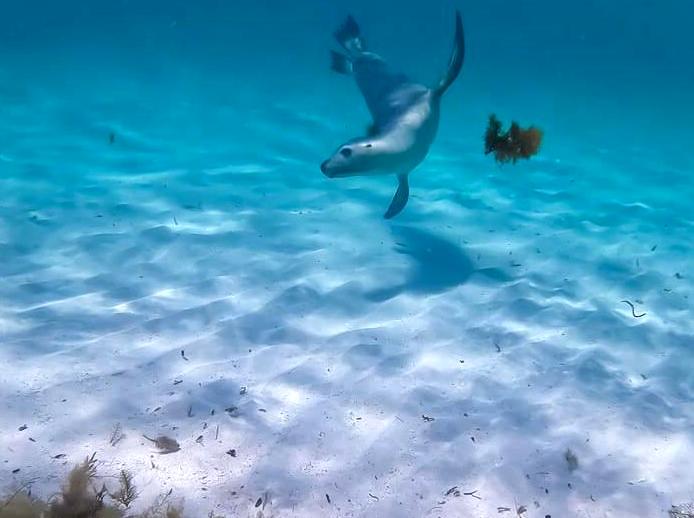The presence of marine fossils in the desert’s limestone tells a compelling story about Earth’s geological history. This article dives into the fascinating world of ancient marine fossils found in desert limestone formations, revealing how they got there and what they tell us about our planet’s past.

The Mysteries of Desert Limestone
Deserts, with their arid climates and vast, sandy expanses, might seem like unlikely places to discover marine fossils. However, limestone formations in these arid regions often hold the key to unlocking ancient ocean secrets. These fossils are remnants from a time when these areas were submerged under vast, prehistoric seas.
Geologists have long been intrigued by these limestone formations. By studying the layers of rock and the fossils within them, scientists can reconstruct the environments of ancient oceans. This can reveal information about sea levels, climate conditions, and the types of organisms that once thrived in these marine settings.
Formation of Limestone and Fossilization
Limestone is a sedimentary rock primarily composed of calcium carbonate. It forms in marine environments where there is an abundance of biological material, such as shells and coral. Over millions of years, these materials accumulate on the ocean floor and undergo compaction and cementation to form limestone.
The fossilization process preserves the remains of these ancient organisms within the limestone. When these once-submerged areas uplift and expose the limestone to erosion, the fossils within become accessible for study. This transition from marine to terrestrial environments can take millions of years and involves complex geological activity.

Types of Marine Fossils Found in Desert Limestone
The variety of marine fossils found in desert limestone formations is astounding. These include:
- Bivalves: Two-shelled organisms like clams and oysters.
- Gastropods: Snail-like creatures with coiled shells.
- Cephalopods: Squid and octopus ancestors with spiral shells, such as ammonites.
- Coral: Marine invertebrates that form extensive reef structures.
- Trilobites: Early arthropods with segmented bodies and exoskeletons.
Each fossil type provides invaluable insights into the biodiversity and ecological dynamics of ancient marine environments. These fossils not only help scientists understand past life forms but also guide predictions about future ecological shifts.
The Significance of Studying Fossils
Windows into Earth’s History
Studying marine fossils embedded in desert limestone is more than a pursuit of academic interest – it opens windows into Earth’s history. These fossils reveal changes in sea levels, climate patterns, and the migration of tectonic plates over millions of years. Such data are instrumental for understanding the evolutionary history of life on Earth.

The knowledge gleaned from fossil studies also has practical implications. For instance, understanding past climate conditions can inform models predicting future climate change. Fossil studies can also aid in the exploration of natural resources, like identifying potential reserves of fossil fuels.
Notable Fossil Discovery Sites
Several desert regions around the world are famous for their rich deposits of marine fossils. Notable sites include:
- The Sahara Desert: Known for its extensive fossilized remains of fish, marine reptiles, and even ancient whales.
- The Great Basin Desert: Hosts limestone formations rich in trilobites and other marine fossils.
- The Egyptian Desert: Home to the famous Wadi Al-Hitan, or “Valley of the Whales,” where the fossils of ancient cetaceans are prevalent.
Exploring these sites not only provides historical insights but also attracts tourists, contributing to the local economy and raising awareness about the importance of preserving geological and paleontological heritage.

Conclusion
Marine fossils found in desert limestone formations offer captivating and invaluable insights into our planet’s ancient past. Through them, we learn about the dynamic changes Earth has undergone, from ancient seas to arid sands. The study of these fossils enriches our understanding of geological and biological evolution, offering a testament to the ever-changing nature of our world.
FAQs
1. What causes marine fossils to be found in desert regions?
Marine fossils are found in desert regions because these areas were once covered by ancient oceans. Over geological time, tectonic movements uplifted the seabed to create landforms that are now deserts.
2. How are fossils preserved in limestone?
Fossils are preserved in limestone through a process called mineralization, where the organic material is replaced by minerals over millions of years, leaving a rock-like replica of the original organism.
3. Why is it important to study marine fossils?
Studying marine fossils helps us understand ancient ecosystems, climate changes, and evolutionary processes. It also aids in predicting future ecological and geological changes.
4. What types of marine fossils are commonly found in desert limestone?
Common marine fossils found in desert limestone include bivalves, gastropods, cephalopods, coral, and trilobites. Each provides unique insights into the ancient marine environments.
5. What are some well-known sites for finding marine fossils in deserts?
Notable sites for discovering marine fossils in deserts include the Sahara Desert, the Great Basin Desert, and the Egyptian Desert’s Wadi Al-Hitan.



